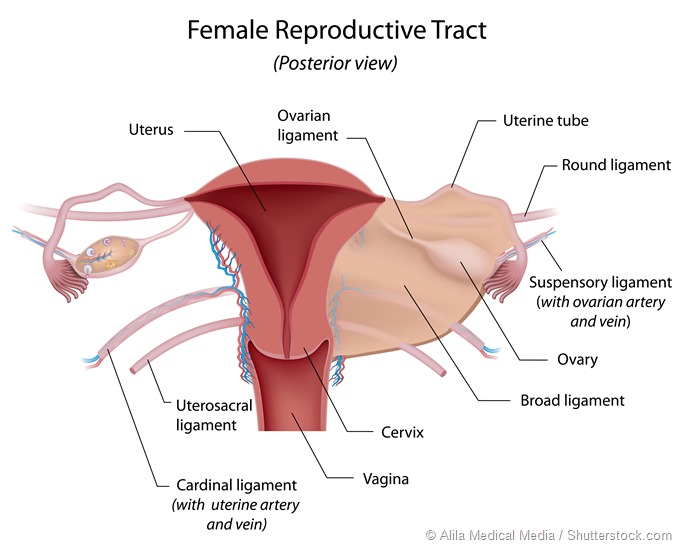For women who are at high risk of developing ovarian breast cancer, prophylactic bilateral oophorectomy to remove the ovaries on both sides and reduce the risk of these cancers may be indicated. The procedure is primarily performed to reduce the risk of ovarian cancer, although it is also associated with a reduced risk of breast cancer.

When both ovaries have been removed as a result of an oophorectomy, the production of estrogen and progesterone hormones in the body is significantly reduced. This can lead to slowed growth of cancers that require these hormones to grow, such as estrogen receptor-positive breast cancer.
Women who may benefit from oophorectomy
Due to the invasiveness and the associated risk of the procedure, a prophylactic oophorectomy is usually only recommended for women with a significantly increased risk of breast or ovarian cancer.
There are several gene mutations that are associated with an increased risk of developing breast cancer of ovarian cancer in women. These include a mutation in the BRCA1 or BRCA2 genes.
Women who have inherited one of these gene mutations or have a strong family history of these cancers may benefit from an oophorectomy. It is best for women who have already had children or do not wish to have children in the future because removal of the ovaries will render them infertile.
Risks of oophorectomy
Oophorectomy is generally considered to be a safe procedure, although there is a risk of several complications such as infection, blockage of the intestine, and internal organ injury.
However, the most significant risk associated with oophorectomy is linked to the reduction in estrogen and progesterone hormones, which are usually produced in the ovaries. This can lead to early onset of menopause and associated effects such as:
- Early-onset menopause: symptoms such as hot flashes, vaginal dryness, low libido, sleep disturbances.
- Osteoporosis: lower levels of estrogen leads to thinning of the bones and increased risk of broken bones.
- Heart disease: lower levels of estrogen are associated with an increased risk of heart disease.
- Primary peritoneal cancer: cancerous growth may present in the peritoneal space where the ovaries were removed.
It is important that women considering the oophorectomy procedure consider the emotional effect that the loss of ovaries may involve. Even for women who do not plan on having children, losing fertility or a sense of feminity associated with the reproductive cycle may result in some uncertain feeling following the procedure.
Oophorectomy and cancer risk reduction
An oophorectomy can significantly reduce the risk of a woman to be diagnosed with ovarian cancer and breast cancer. The risk of each woman developing these cancers will depend on many factors, such as age, family medical history, diet, and lifestyle.
The risk of ovarian cancer can be reduced by 80-90% with an oophorectomy. This means that a woman who naturally has a 30% chance of being diagnosed with ovarian cancer during her life can reduce the risk to 6% following an oophorectomy.
For premenopausal women who have inherited a known BRCA mutation, a prophylactic oophorectomy can reduce the risk of breast cancer by up to 50%. This means that a woman with a 60% lifetime risk of being diagnosed with breast cancer will then have a risk of 30%.
Many women with BRCA gene mutations will also have their fallopian tubes removed during the same surgical procedure, to reduce their risk of fallopian tube cancer.
The greatest benefit is seen in women who initially have a high risk of breast cancer or ovarian cancer, as risk reduction is more significant.
References
- http://www.cancer.org/cancer/ovariancancer/detailedguide/ovarian-cancer-treating-surgery
- http://www.mayoclinic.org/tests-procedures/oophorectomy/in-depth/breast-cancer/art-20047337
- http://www.uptodate.com/contents/risk-reducing-bilateral-salpingo-oophorectomy-in-women-at-high-risk-of-epithelial-ovarian-and-fallopian-tubal-cancer
- https://www.ncbi.nlm.nih.gov/pmc/articles/PMC4624417/
- https://www.acog.org/
Further Reading